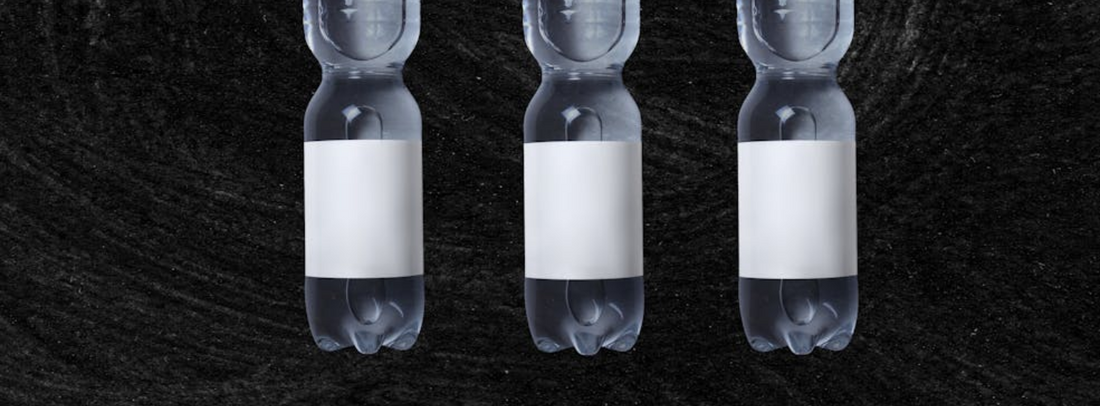Tired of struggling to remove stubborn labels from plastic bottles? Whether you're upcycling them into DIY projects or simply preparing them for recycling, a clean bottle is essential. In this guide, we'll explore easy and effective methods to effortlessly remove labels, leaving your bottles ready for their next purpose.
Gentle Methods: A Gentle Approach to Label Removal
When it comes to removing labels from plastic bottles, a gentle touch can often yield impressive results. These methods are ideal for those who prefer a less aggressive approach or are working with delicate plastic.
1. Warm Water Soak: A Classic Technique
A tried-and-true method, the warm water soak is a gentle yet effective way to loosen adhesive.
Steps Involved:
- Fill the Bottle: Fill the plastic bottle with hot, but not boiling, water. The heat helps to soften the adhesive, making it easier to remove.
- Soak: Allow the bottle to soak in the hot water for 10-15 minutes. For stubborn labels, consider extending the soaking time.
- Peel: Once the adhesive has softened, gently peel off the label. If necessary, use a plastic scraper or your fingers to aid in removal.
2. Vegetable Oil: A Greasy Solution
Vegetable oil, a common household item, can be a surprisingly effective tool for label removal.
Application Process:
- Apply Oil: Liberally apply vegetable oil to the entire surface of the label. The oil penetrates the adhesive, weakening its bond to the plastic.
- Wait: Let the oil sit for a few minutes to work its magic. The longer you wait, the easier the label will be to remove.
- Wipe Off: Use a clean cloth or paper towel to wipe away the softened label and any remaining oil residue.
3. Rubbing Alcohol: A Chemical Solution
Rubbing alcohol, a potent solvent, can quickly dissolve many types of adhesives.
Application Technique:
- Soak a Cloth: Soak a clean cloth or paper towel in rubbing alcohol.
- Apply to Label: Apply the soaked cloth directly to the label, ensuring full coverage.
- Scrub Gently: Gently scrub the label with the cloth, using circular motions. The alcohol will break down the adhesive, making it easier to remove.
While these gentle methods are effective for a wide range of label types, their efficacy may vary depending on the specific adhesive used. For example, labels with strong, industrial-strength adhesives may require more intensive methods. However, for most household and commercial labels, these gentle approaches should suffice.

More Intensive Methods: For Stubborn Labels
When gentle methods fail to remove stubborn labels, it's time to turn to more intensive techniques. While these methods can be effective, it's important to use them with caution to avoid damaging the plastic bottle.
1. Using A Chemical Solution
Using a chemical commercial products are designed to dissolve a wide range of adhesives. However, it's essential to use them with caution, as they can damage certain types of plastic.
Cautions for Use:
- Test on an Inconspicuous Area: Before applying the product to the entire label, test it on a small, inconspicuous area of the plastic to ensure it doesn't cause any damage.
- Ventilation: Use the product in a well-ventilated area to avoid inhaling fumes.
- Protective Gloves: Wear gloves to protect your hands from the chemicals.
Steps for Application and Removal:
- Apply Product: Apply the chemical solution directly to the label, following the manufacturer's instructions.
- Wait: Allow the product to sit for the recommended amount of time.
- Wipe Off: Use a clean cloth or paper towel to wipe away the softened label and any residue.
- Clean the Bottle: Wash the bottle thoroughly with soap and water to remove any remaining chemicals.
2. Baking Soda Paste: A Natural Approach
Baking soda is a mild abrasive that can be used to scrub away stubborn labels.
Preparation of the Paste:
- Mix Ingredients: Combine baking soda with a small amount of water to form a thick paste.
- Apply Paste: Apply the paste to the label, covering it completely.
Scrubbing Technique:
- Scrub: Use a soft-bristled brush to gently scrub the label. The abrasive nature of the baking soda will help to loosen the adhesive.
- Rinse: Rinse the bottle with warm water to remove the baking soda paste.
- Repeat: If necessary, repeat the process until the label is completely removed.
Important Note: While baking soda is a relatively gentle abrasive, excessive scrubbing can still damage the plastic, especially if it's thin or brittle. Therefore, it's important to use a light touch and avoid excessive force.

Tips for Successful Label Removal
To ensure a smooth and efficient label removal process, consider these helpful tips:
Patience is Key
Rushing the process can lead to frustration and potential damage to the plastic bottle. Take your time, and allow the chosen method to work its magic.
Test on a Small Area
Before applying any method to the entire label, test it on a small, inconspicuous area of the plastic. This will help you assess the effectiveness of the method and identify any potential side effects.
Thorough Cleaning
Once the label is removed, it's crucial to clean the bottle thoroughly. Wash the bottle with warm, soapy water to remove any remaining adhesive residue or chemical residue from cleaning products.
Recycling Considerations
Before recycling your plastic bottles, check your local recycling guidelines. Some recycling facilities may have specific requirements regarding label removal. Removing labels can improve the recycling process and help ensure that your bottles are properly processed.
Conclusion
By following these methods and tips, you can effectively remove labels from plastic bottles and prepare them for reuse or recycling. Remember, patience is key, and it's always best to start with the gentlest methods before moving on to more intensive techniques. By taking a careful and considered approach, you can ensure that your plastic bottles are cleaned and ready for their next purpose.




